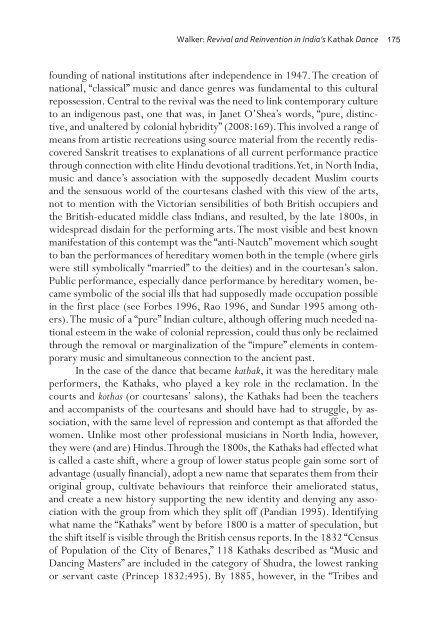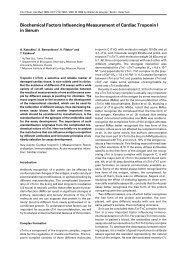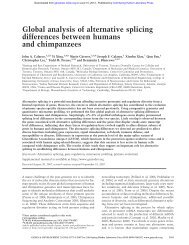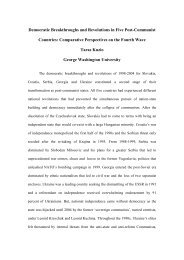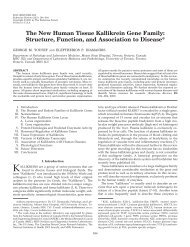revival and reinvention in india's Kathak dance - University of Toronto
revival and reinvention in india's Kathak dance - University of Toronto
revival and reinvention in india's Kathak dance - University of Toronto
You also want an ePaper? Increase the reach of your titles
YUMPU automatically turns print PDFs into web optimized ePapers that Google loves.
Walker: Revival <strong>and</strong> Re<strong>in</strong>vention <strong>in</strong> India’s <strong>Kathak</strong> Dance175found<strong>in</strong>g <strong>of</strong> national <strong>in</strong>stitutions after <strong>in</strong>dependence <strong>in</strong> 1947. The creation <strong>of</strong>national, “classical” music <strong>and</strong> <strong>dance</strong> genres was fundamental to this culturalrepossession. Central to the <strong>revival</strong> was the need to l<strong>in</strong>k contemporary cultureto an <strong>in</strong>digenous past, one that was, <strong>in</strong> Janet O’Shea’s words, “pure, dist<strong>in</strong>ctive,<strong>and</strong> unaltered by colonial hybridity” (2008:169). This <strong>in</strong>volved a range <strong>of</strong>means from artistic recreations us<strong>in</strong>g source material from the recently rediscoveredSanskrit treatises to explanations <strong>of</strong> all current performance practicethrough connection with elite H<strong>in</strong>du devotional traditions. Yet, <strong>in</strong> North India,music <strong>and</strong> <strong>dance</strong>’s association with the supposedly decadent Muslim courts<strong>and</strong> the sensuous world <strong>of</strong> the courtesans clashed with this view <strong>of</strong> the arts,not to mention with the Victorian sensibilities <strong>of</strong> both British occupiers <strong>and</strong>the British-educated middle class Indians, <strong>and</strong> resulted, by the late 1800s, <strong>in</strong>widespread disda<strong>in</strong> for the perform<strong>in</strong>g arts. The most visible <strong>and</strong> best knownmanifestation <strong>of</strong> this contempt was the “anti-Nautch” movement which soughtto ban the performances <strong>of</strong> hereditary women both <strong>in</strong> the temple (where girlswere still symbolically “married” to the deities) <strong>and</strong> <strong>in</strong> the courtesan’s salon.Public performance, especially <strong>dance</strong> performance by hereditary women, becamesymbolic <strong>of</strong> the social ills that had supposedly made occupation possible<strong>in</strong> the first place (see Forbes 1996, Rao 1996, <strong>and</strong> Sundar 1995 among others).The music <strong>of</strong> a “pure” Indian culture, although <strong>of</strong>fer<strong>in</strong>g much needed nationalesteem <strong>in</strong> the wake <strong>of</strong> colonial repression, could thus only be reclaimedthrough the removal or marg<strong>in</strong>alization <strong>of</strong> the “impure” elements <strong>in</strong> contemporarymusic <strong>and</strong> simultaneous connection to the ancient past.In the case <strong>of</strong> the <strong>dance</strong> that became kathak, it was the hereditary maleperformers, the <strong>Kathak</strong>s, who played a key role <strong>in</strong> the reclamation. In thecourts <strong>and</strong> kothas (or courtesans’ salons), the <strong>Kathak</strong>s had been the teachers<strong>and</strong> accompanists <strong>of</strong> the courtesans <strong>and</strong> should have had to struggle, by association,with the same level <strong>of</strong> repression <strong>and</strong> contempt as that afforded thewomen. Unlike most other pr<strong>of</strong>essional musicians <strong>in</strong> North India, however,they were (<strong>and</strong> are) H<strong>in</strong>dus. Through the 1800s, the <strong>Kathak</strong>s had effected whatis called a caste shift, where a group <strong>of</strong> lower status people ga<strong>in</strong> some sort <strong>of</strong>advantage (usually f<strong>in</strong>ancial), adopt a new name that separates them from theirorig<strong>in</strong>al group, cultivate behaviours that re<strong>in</strong>force their ameliorated status,<strong>and</strong> create a new history support<strong>in</strong>g the new identity <strong>and</strong> deny<strong>in</strong>g any associationwith the group from which they split <strong>of</strong>f (P<strong>and</strong>ian 1995). Identify<strong>in</strong>gwhat name the “<strong>Kathak</strong>s” went by before 1800 is a matter <strong>of</strong> speculation, butthe shift itself is visible through the British census reports. In the 1832 “Census<strong>of</strong> Population <strong>of</strong> the City <strong>of</strong> Benares,” 118 <strong>Kathak</strong>s described as “Music <strong>and</strong>Danc<strong>in</strong>g Masters” are <strong>in</strong>cluded <strong>in</strong> the category <strong>of</strong> Shudra, the lowest rank<strong>in</strong>gor servant caste (Pr<strong>in</strong>cep 1832:495). By 1885, however, <strong>in</strong> the “Tribes <strong>and</strong>


